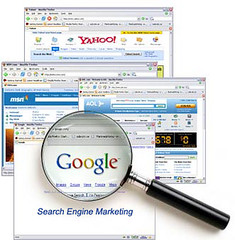 |
| Photo credit to Danard Vincente on Flickr |
Tech Tool:
 | |
| Photo credit to Dan Cohen at CHNM |
Summary and Connection:
Chapter two of Transforming Learning With New Technologies by Maloy, R.W., Verock-‐O'Loughlin, R., Edwards, S. A., & Woolf, B. P was another chapter stocked to the brim with information on different teaching techniques and how to apply those techniques using technology. Last semester I took Introduction to Teaching and recognized the teaching philosophies listed in this chapter and remembered a couple more, e.g. Progressivism and Essentialism. The chapter really reinforced my belief that students will learn best when the students are most involved in the direction of the class. A student-centered class help students learn through assembling knowledge within groups or discussions and helps the students discover information and how it intertwines with other questions and obstacles. Expanding the curriculum to include active learning, creative problem solving, and reflection and experiences also helps the students broaden their minds. The chapter also focused on the benefits of multi-media education as opposed to the flat and static text on paper that is used in the classroom books today. The idea to integrate music and podcasts with panoramas, time series graphs, and high resolution images and connect them in two and three dimensional space is ground breaking. To "recreate the past, view the present, and envision the future" a teacher must use the best technology has to offer to better engage the student through this journey.
Food For Blog:
It is understood that almost all information that is gathered for research purposes is found on the internet. Everyone from 2nd grade students to a Professor pursuing a Doctorate Degree is using the internet to obtain information. But is this information reliable? A study conducted by Teaching Internet Comprehension to Adolescents (TICA) found that fewer than 10% of students in 7th grade checked the accuracy of the information they found on the internet. If information is power is it any wonder why our education has become our weakness?